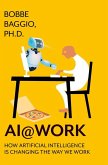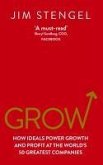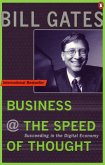This book explores the impact of #WFH (work from home) on regular people, everyday lives and the way we work and feel. A pandemic started in China in early February 2020 when cities like Huanggang and Wuhan sent workers home and the province of Hubei went on lockdown. China is where COVID-19 originated and in China working from home was almost unheard of prior to the pandemic. But once the government shut everything down and encouraged workers to stay at home, millions of Chinese started to experience the pros and cons of working from home for the first time. Much like the scenes in New York that were to follow, early on the streets in Beijing, Shanghai and Guangzhou were spooky and quiet. Videoconference platforms took the place of conference tables and WeChat, DingTalk and Zoom were being used everywhere. Workers around the globe have had to adjust to a new way of working. Bosses have had to adjust to a new way of trusting. Individuals have had to reconsider what and how they focus: are they distracted by family members and finding it difficult to concentrate or are they enjoying the experience and improving their productivity? Everyone has been forced to adapt.
It always comes back to trust and control. When employees respond to emails or texts late, or take time for personal things, or miss a meeting, it can make administration feel uneasy. Weekly meetings, daily meeting and impromptu meetings can make them feel like they are more connected, and everyone is on the same page. Daily reporting on what employees have done, what they plan on doing tomorrow, and what they are doing today is also often required. These are evidence of the "trust gap." Often, it might make administration feel better, but it doesn't usually work out well with employees. More time in meaningless meetings cuts into time for real work. Reporting daily achievements and tomorrow's tasks takes time. Workers think it decreases efficiency and increases unnecessary time.
Most companies have the essential technologies for working from home but it's not about that. It's about decreasing the office rent expenditure and long commute time, increasing time with family and quality of life. For working from home to be successful, the remote worker has to learn how to effectively balance work and life. Often people initially feel more stressed both mentally and physically. Once people adjust, they tend to like working from home; balancing work and life can be rewarding and decrease stress. More traditional industries, production floor workers and teams that require a high degree of coordination will still be averse to working from home. The new normal is helping people see that it's time to change and open up to new possibilities. Old habits are difficult to change but the old style of management is becoming less popular. Companies are focusing more on what employees need and how they can contribute. #WFH has forced companies to examine relationships and elevate their culture to include trust and to care more about employees.
It always comes back to trust and control. When employees respond to emails or texts late, or take time for personal things, or miss a meeting, it can make administration feel uneasy. Weekly meetings, daily meeting and impromptu meetings can make them feel like they are more connected, and everyone is on the same page. Daily reporting on what employees have done, what they plan on doing tomorrow, and what they are doing today is also often required. These are evidence of the "trust gap." Often, it might make administration feel better, but it doesn't usually work out well with employees. More time in meaningless meetings cuts into time for real work. Reporting daily achievements and tomorrow's tasks takes time. Workers think it decreases efficiency and increases unnecessary time.
Most companies have the essential technologies for working from home but it's not about that. It's about decreasing the office rent expenditure and long commute time, increasing time with family and quality of life. For working from home to be successful, the remote worker has to learn how to effectively balance work and life. Often people initially feel more stressed both mentally and physically. Once people adjust, they tend to like working from home; balancing work and life can be rewarding and decrease stress. More traditional industries, production floor workers and teams that require a high degree of coordination will still be averse to working from home. The new normal is helping people see that it's time to change and open up to new possibilities. Old habits are difficult to change but the old style of management is becoming less popular. Companies are focusing more on what employees need and how they can contribute. #WFH has forced companies to examine relationships and elevate their culture to include trust and to care more about employees.
Dieser Download kann aus rechtlichen Gründen nur mit Rechnungsadresse in A, B, CY, CZ, D, DK, EW, E, FIN, F, GR, H, IRL, I, LT, L, LR, M, NL, PL, P, R, S, SLO, SK ausgeliefert werden.









